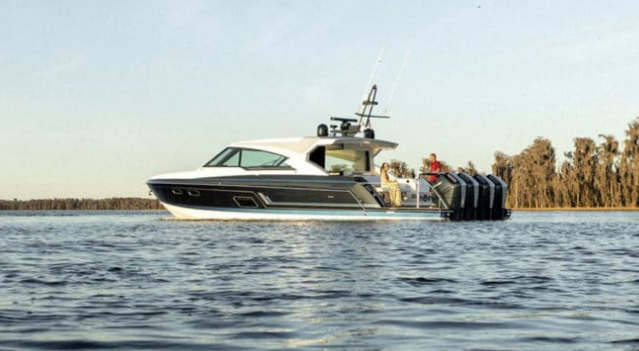Make the effort to rig the necessary manipulate traces and you will get better performance at the downwind leg. "hands-On Sailor" from our June 2009 issue.

no matter whether the journey is a trade-wind romp across one thousand miles of ocean or a daysail up the bay, a cruising boat it really is now not ready with a whisker pole loses the ability to sail correctly while the vacation spot is dead downwind. In any chop or waves, it is hard, if no longer not possible, to wing the jib out unsupported, and with the wind farther aft than about a hundred and forty-ranges apparent, the primary will blanket the jib or genoa. it is a total of approximately eighty ranges of apparent wind that you can't use effectively with out a pole. however many cruisers do not bring a pole because they feel it's difficult to installation and use. it truly is now not the case in case you comply with some easy steps. let's undergo what it takes to wing out your jib with a pole. outboard motor covers
Your device desires? A topping elevate or spare halyard to elevate the pole to the appropriate top, and a downhaul, or foreguy, to drag the pole down and forward. The foreguy runs from the outer stop of the pole via a block close to the bow and lower back to a winch or cleat in the cockpit. along side the jib sheet, those two controls stabilize the pole so it won't move after it is set. you can also installation an afterguy, a line from the quit of the pole to the cockpit, to pull the pole lower back and preserve it constant earlier than sheeting the jib home. I continually set the pole with the jaws up, but this is now not critical.
Steps to setting the Pole
whilst the pole remains stowed on deck, attach the topping carry and foreguy. take up the slack within the topping raise. leave a few toes of slack within the foreguy. in case you're already crusing deep off the wind, the jib at this point ought to be furled.
release the pole from its chocks. region the windward jib sheet within the upturned jaws.
Now you are equipped to set the pole. elevate the aft end and push it forward, making sure that it's on the windward side of the forestay. due to the fact the topping elevate changed into tight, the ahead quit ought to come to be above the pulpit or lifelines. The tight topping raise will help to hold it off the deck. Then attach the inboard quit to the mast.
adjust the outboard and inboard ends of the pole so they may be the equal height because the jib clew.
in case you're already crusing close to dead downwind, make certain there is masses of slack in the foreguy, then unfurl the jib and sheet it home, being cautious that you prevent winching earlier than the pole touches the shrouds. in case you're sailing on the wind, flip downwind; whilst the breeze is sort of useless in the back of the boat, jibe the jib to the windward side and sheet it in, as above. either way works however I discover it less difficult all around first of all the jib furled.
Now pull the foreguy tight; this sets you up to run wing and wing. the usage of this setup, you should be able to sail with the wind as far ahead as 130-tiers apparent, although you can want to ease the pole forward a piece and furl a number of your jib.
as soon as the sail is about, watch that your jib sheet and foreguy do not chafe on the lifelines; relead them in the event that they do. To stow the pole, truly reverse the manner.
 Dies ist eine mit page4 erstellte kostenlose Webseite. Gestalte deine Eigene auf www.page4.com
Dies ist eine mit page4 erstellte kostenlose Webseite. Gestalte deine Eigene auf www.page4.com